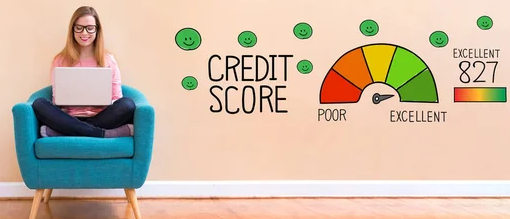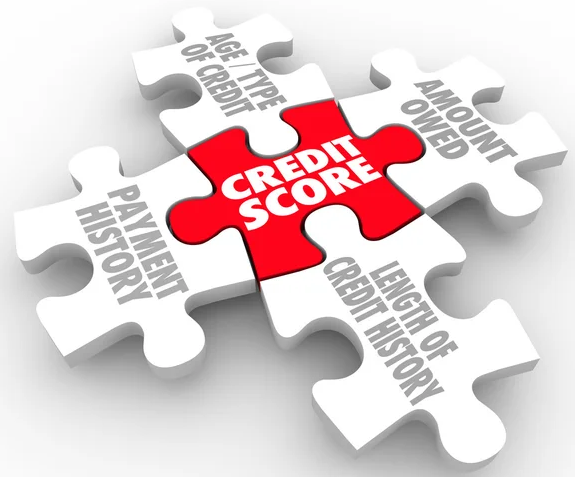Loan management isn’t always straightforward, especially when juggling multiple loans. No wonder most debts increasingly fall past due in the USA. As of 2023, consumer debt in American banks had a 2.62% delinquency rate. This rate has been growing since 2021.
The sad news is that delinquency has risen across all debt types. Over 8% of credit card balances become delinquent yearly. Auto loans have an annual delinquency rate of 7.9%. These statistics indicate aggravating financial distress among most households.
What makes multiple debt management daunting? The hassle of dealing with various interest rates, repayment terms, and due dates. This financial burden can lead to significant stress trying to get things organized.
But what if there was a more seamless way to manage multiple payments and deadlines? Look no further than loan consolidation.
Discover how this strategy simplifies your debt repayment, eradicating recurring financial stress.
Understanding multiple loans
Having multiple loans means managing many financial obligations simultaneously. You borrow money from various lenders to finance several bills. Each loan comes with distinct terms, conditions, and implications.
Common types of loans people often take include:
- Student loans. These debts typically cover educational expenses like tuition, fees, and living costs. They may be private or federal.
- Personal loans. Most folks borrow these loans for various personal expenses like home improvement. These debts are typically unsecured with fixed interest rates and repayment terms.
- Credit card debt. This revolving line of credit accumulates over time as you make purchases.
- Mortgages. These are long-term secured loans for property purchases. They may carry fixed or variable interest rates and lengthy repayments.
Managing multiple loans can demand much from you. Common issues faced include:
- Varied interest rates. Dealing with different high interest rates can impact your overall borrowing cost.
- Different payment schedules. Varying timelines make it difficult to keep track of due dates. The risk of missed payments and late fees goes up.
- Overall financial strain. Your debt burden can affect timely payments. It may also limit your ability to save or cover other expenses.
Overview of debt relief programs
Debt relief programs in the USA help you manage and reduce your debt burdens. They feature various mechanisms to assist you get back on track financially.
Are you grappling with overwhelming debt? Relief programs typically intervene by:
- Lowering interest rates
- Negotiating for a lower debt amount
- Extending loan repayment terms
Below are the main types of debt relief programs in the USA and their legality.
Debt settlement
Debt settlement revolves around negotiating with your lender. It aims to settle your debt for less than what you owe. Your creditor may agree to a lower interest rate or monthly payment. The goal is to make your debt more manageable.
A debt management company acts as the mediator in these negotiations. You may cease regular monthly payments and put the money into a savings account. The company negotiates on your behalf once you save enough.
This option suits those struggling to make monthly payments. It’s one of the fastest ways to get out of debt. Debt settlement is legal, although heavily regulated. Additionally, payment stoppage may impact your credit score for some time.
Debt consolidation
Debt consolidation in the USA is among the most sought-after relief solutions. It combines your outstanding loans into one monthly payment. Think of it as taking out a new loan to finance your existing debts.
Consolidation loans may lead to lower interest rates or more manageable monthly payments. Its primary aim is simplifying loan repayment. You can consolidate through:
- Personal loans
- Balance transfer credit card
- Home equity loan or line of credit
Consolidating debt is legal but risky if you don’t manage credit responsibly.
Credit counseling
Sometimes, debt relief requires evaluating your budget and making changes. Credit counseling services come in handy in this analysis and adjustments. They offer financial education and guidance to help you manage debt better.
Professional counselors assess your financial situation and craft a personalized budget. They help you create a pay-off roadmap that leads to better financial health. These experts may also work with your creditors to lower interest rates.
This strategy is legal and often run by non-profit agencies under strict regulations. Credit counseling simplifies debt management without impacting credit negatively.
Debt management plan (DMP)
Debt management plans (DMPs) usually target unsecured debts like medical bills. Credit card balances may also qualify. DMPs assist through direct intervention and providing debt management education.
Put simply, they help you to pay off high-interest debts without taking another bank loan.
DMPs lower interest rates while making payments affordable. You may end up paying off the debt within a shorter time. Most DMPs are non-profit, offering free or low-cost services. Just like credit counseling services, DMPs operate under government regulation.
Remember, there isn’t a one-size-fits-all debt relief solution. Each option has its pros and cons. What works for others may not work for you. The best program depends on your financial situation and goals.
The bottom line? Do your research, consult a financial advisor, and weigh your options before deciding. Once you find the right solution, you can overcome debt and regain financial freedom.
What is loan consolidation?
Debt consolidation is merging several loans into one fixed monthly payment. You take out a new single loan to pay off existing multiple debts. The aftermath is streamlined finances and reduced repayment pressure.

A successful consolidation can make you debt-free faster while saving money on interest. It helps you eliminate the risk of defaulting on current loans.
How best do you leverage this solution? Prioritize debts with the highest interest rates to optimize total savings. Additionally, aim for the shortest repayment term to keep borrowing costs in check.
The most sought-after methods of consolidation include:
- Personal loans. You take out a new loan with a lower interest rate than your existing debts. Then, use the proceeds of the new loan to pay off the original debts.
- Balance transfer credit cards. These cards offer a 0% introductory interest rate, usually for up to 21 months. Transfer the balance on your current cards to these interest-free cards for a period.
- Home equity loans. They leverage your home’s equity to get you out of debt. Use the accumulated equity to secure a new loan. Pay off other high-interest debts with the proceeds.
Benefits of loan consolidation
Loan consolidation has many debt management benefits, like the ones below.
Simplified repayment process
Loan consolidation translates to one monthly payment, affording you simplified repayment. You no longer have to juggle multiple due dates and bills. One monthly payment is easier to manage and track. It also adds predictability to your budget.
Potential for lower interest rates
Debt consolidation may help you secure lower interest rates in favorable market conditions. In other words, you get a lower rate than the average rate of existing debts. This reduction culminates in substantial money savings over time.
Improved credit score
Well-strategized loan consolidation results in better debt management and improved credit scores. Consistent on-time payments on your consolidated loan show you’re a responsible borrower. This discipline helps you clear debt faster, reflecting positively on your credit score.
Additionally, paying off revolving lines of credit lowers your credit utilization rate. This ratio features in your credit report. It shows the portion of available credit you currently use. Typically, a lower rate is ideal.
Reduction in financial stress
The cumulative benefits of debt consolidation ultimately lead to financial stress reduction. The burden of managing numerous loans can be overwhelming. Consolidation streamlines your processes by giving you a well-defined roadmap to becoming debt-free.
Potential cost savings over time
Consolidation reduces the number of loans and interest rates you service. It may lead to cost savings from minimized fees and interest payments. Simplified finances help you avoid associated fees like penalties.
Potential risks and downsides
While loan consolidation offers advantages, beware of potential drawbacks. Below is a roundup of common concerns.
Possible fees associated with loan consolidation
Merging multiple loans is a rigorous process that may attract extra charges. Common consolidation fees to watch out for include:
- Origination fees
- Balance transfer fees
- Closing costs
- Annual fees
Carefully review the terms and conditions of any loan consolidation option before closing. Ensure the fees are reasonable and don’t outweigh the potential benefits or savings.
Risk of higher overall interest
An extended loan term during consolidation means you pay interest for longer. You may get lower monthly payments but at what expense? You’ll have paid more interest at the end of the loan’s life.
Potential impact on credit score
Debt consolidation comes with a possible credit score impact due to hard inquiries. This situation arises when the lender asks to review your credit report.
A hard inquiry typically stays on your credit report for up to two years. It can negatively impact your credit score in the short term.
Not all debts may be eligible for consolidation
Debt eligibility is crucial when making a consolidation decision. Some debts may not be eligible due to specific unalterable repayment terms. Common ineligible loans include:
- Primary Care Loans
- Medical Assist Loans
- Law Access Loans
- University Trust Fund Loans
How to determine if loan consolidation is right for you
Loan consolidation can be a powerful tool, but it’s not a one-size-fits-all solution. Nor is it a quick fix.

Below are crucial pointers to tell if it’s the right move.
Assessing your current financial situation
A thorough financial assessment should precede your debt consolidation. It helps you take a comprehensive look at your current financial situation.
Analyze your income, expenses, and details about existing debt, like interest rates and balances. An accurate assessment reveals the true burden of your multiple loans.
Calculating the total cost of consolidation
Why is total cost calculation vital during consolidation? You may be blinded by focusing on a lower monthly payment alone and neglecting other factors.
How much interest will you pay over the life of the consolidation loan? Will its associated costs align with or contradict your financial goals?
Considering your financial goals
What financial goals drive you into consolidation? Is it faster debt payoff or lower monthly payments?
Consider a loan with a shorter term for faster repayment. A longer repayment period may satisfy the second goal.
Consulting with financial advisors or using online calculators
Want to make an informed decision about loan consolidation? You may need the input of financial advisors or online calculators. This expertise provides you with personalized estimates of your:
- Monthly payments
- Interest rates
- Total cost of consolidation
Additionally, financial advisors can help you evaluate your financial situation comprehensively. They then guide you on the best consolidation options for your specific needs.
Steps to consolidate your loans
Ready to consolidate your multiple debts? Below are the typical steps to land a favorable deal.
Evaluating your current loans and interest rates
Evaluate the loans you currently service alongside their interest rates. List all the debts you want to consolidate and add up the total amount you owe. Analyze your budget for any spending adjustments needed to continue debt repayments.
The consolidated loan should have a lower rate and a monthly payment that fits your budget.
Researching and comparing consolidation options
Once you assess your current loans, research and compare consolidation options. Shop for a solution that’s right for you. Is it a personal loan, balance transfer credit card, or home equity loan?
Then, research the lender that understands your unique needs. Choose from online lenders, credit unions, or banks that offer consolidation.
Applying for a consolidation loan
After thorough due diligence and choosing a reputable lender, apply for consolidation. Start by gathering relevant documents like:
- Proof of identity
- Proof of address
- Income verification
Fill loan application forms with accurate information to avoid delays or disqualification. Allocate enough time to study the loan document’s fine print. Check for any origination fees that can inflate the loan’s total cost.
Managing your consolidated loan effectively
Want to maximize the long-term benefits of merging multiple loans? Manage your consolidated loan effectively by:
- Making timely payments
- Monitoring your credit score
- Avoiding new debt
Leverage tools like a debt consolidation calculator to help you track your progress. Stay on top of your payments to avoid defaults and negative credit impact.
Tips for staying on top of your new loan payments
Here are a few loan payment tips to help you stay on top of your repayment plan:
- Set up automatic payments to ensure timely payments.
- Review your budget and adjust spending habits to accommodate the new loan payments.
- Monitor your credit score regularly to ensure consolidation doesn’t impact it negatively.
Avoid new debt by maintaining a strict budget and avoiding impulse purchases.
Manage multiple loans with the United Financial Network
Managing multiple loans can be uphill, but consolidation can make it more manageable. Its benefits bring you closer to financial freedom. This strategy streamlines your finances, simplifying the repayment process. You may also secure lower interest rates.
Making on-time consolidation payments and ultimately clearing your debt improves your credit. The potential cost savings of this strategy are crucial to eliminating financial stress. But what are the considerations before pursuing these benefits?
Beware that loan consolidation may carry a few risks and drawbacks. The new loan could come with added fees like closing costs, inflating your loan costs. It might also impact your credit score temporarily. In the worst cases, some of your debts may not be eligible for consolidation.
Evaluate your loan situation thoroughly before consolidation. Do the potential benefits align with your unique financial goals?
Ready to explore consolidation the right way? Seek professional advice from the United Financial Network. Contact us today for a free assessment and a personalized consolidation solution.












